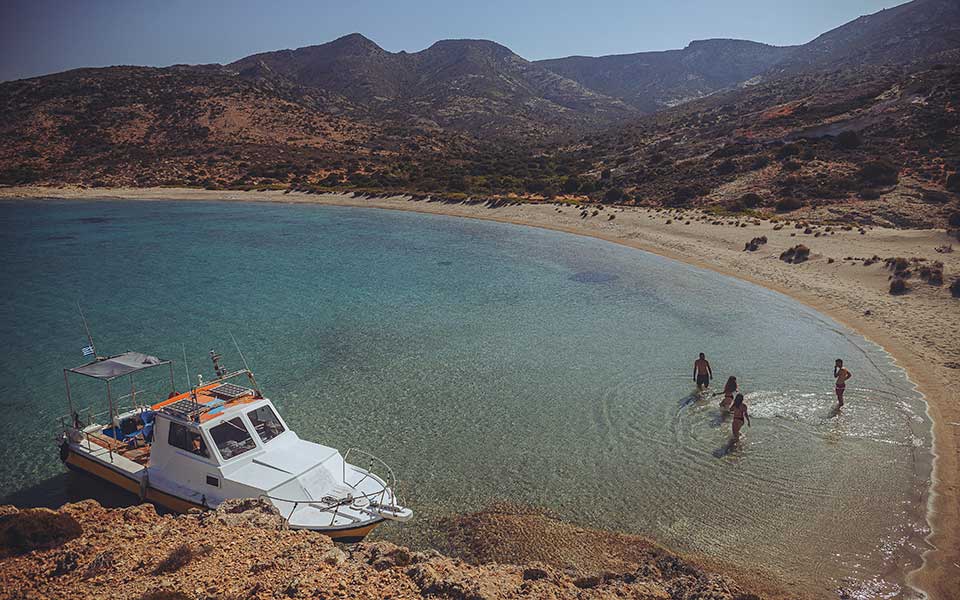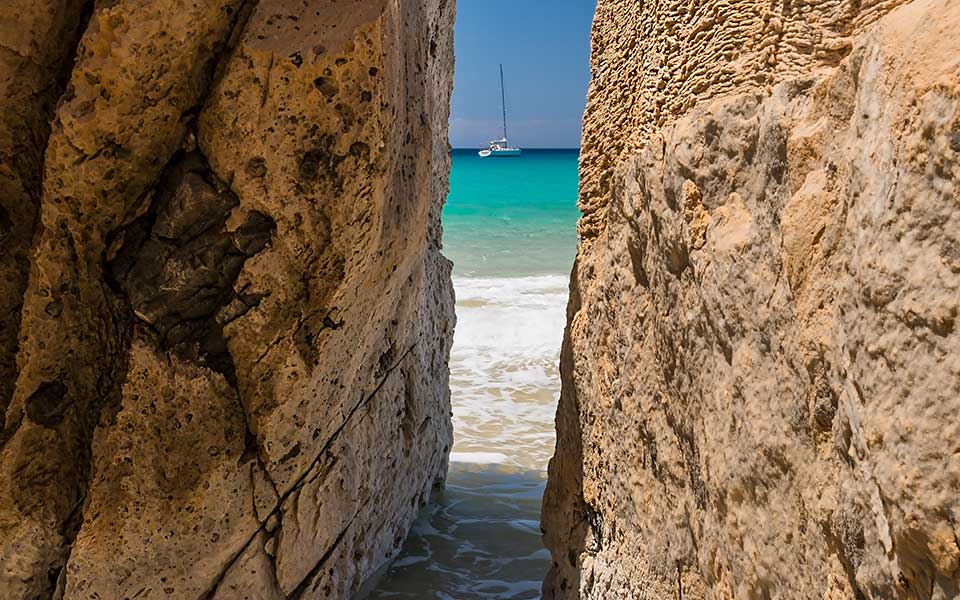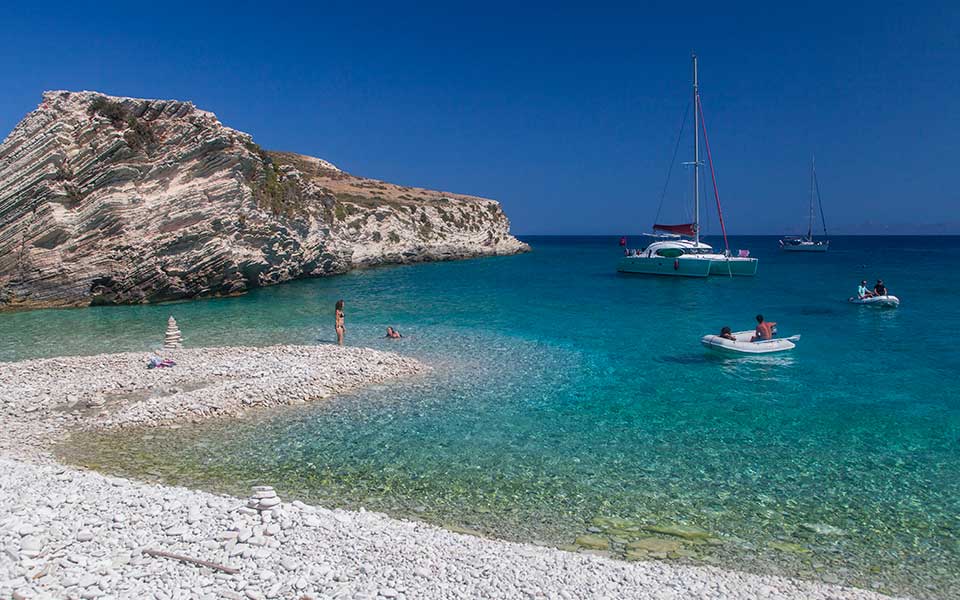Aspronisia and Makronisos, Lipsi
Aspronisia is made up of three rocky islets northeast of Lipsi that were discovered by boat excursionists and are now considered one of the most exotic places in Greece. At the point where two of the islets converge, there’s a bright white beach with limestone cliffs and blue waters, creating the kind of summery scenery we dream of all winter long.
Plunging into the crystal clear, extremely cold waters is always accompanied by shrill shrieks. On the shore there are large white pebbles, but there is no natural shade.
South of Lipsi is the also uninhabited Makronissi, very popular with skippers and excursion boats. It doesn’t have the same enchanting scenery, but does have cliffs for spectacular diving thrills and an impressive enclosed lake filled with seawater.

© Nikos Boutsikos
Polyaigos, Kimolos
Nature here seems to have surpassed its potential. Unique geological formations, exotic beaches, golden sandy shores, turquoise and blue crystal-clear waters, volcanic rocks, colorful pebbles, and caves. That’s probably why Milos claimed it in 416 BC, it is said, but the courts vindicated Kimolos!
Meanwhile, it’s one of the “Important Bird Areas of Greece” as it hosts a large number of endangered species and is included in the Natura 2000 Network for its endemic and rare plant species. It is also a refuge for the Mediterranean Monachus monachus seal and hosts the protected red viper Macrovipera schweizeri, the endemic blue lizard Podarcis milensis and protected wild goats. This is exactly why it should be shielded from tourists.
The island is inhabited in winter by the shepherd Peter Marianos and his wife, who keep their stable and self-sufficient household here. Swim in the spectacular “Galazia,” an area with amazing waters and red rocks, or on the beaches of Pano and Kato Mersini, Panagia and Ammoura. In the latter is the beautiful lighthouse which unfortunately is no longer looked after.

© Shutterstock
Armathia, Kasos
White sand as fine as icing sugar, millions of tiny shells and blue waters. Seagulls’ claw imprints and absolute silence. In Armathia of Kasos, and especially at Marmara beach, the bar for the perfect summer is set very high. It is undoubtedly one of the most beautiful beaches in Greece, and the sense of absolute isolation certainly contributes to this. In August, of course, you won’t be alone, as excursion boats come and go from Kasos, but the ambience is not adversely affected.
The island has not, however, always been uninhabited. Gypsum mines operated on its slopes until the middle of the 20th century, serviced by the famous Kasos boatmen. At that time there was a thriving port here, in Karavostasi, with many cafés, a settlement of which only ruins remain and the chapel of Ipapanti, which hosts a special festival. The festivals of Kasos are famous for their authenticity, but who would come to Armathia in February?












